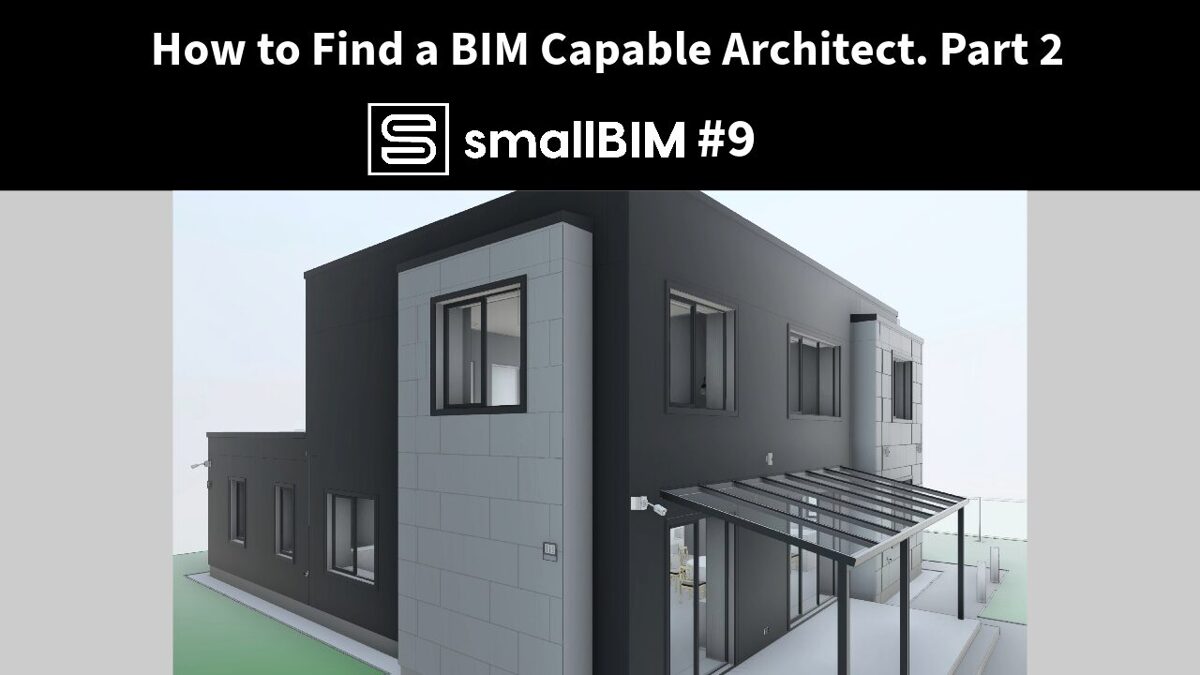How to Find a BIM Capable Architect. Part 2
November 21, 2023 at 7:00 am,
No comments
Finding an architect or any other professional is an important task which can have consequences both positive and negative for the many years ahead. This is the second part of the blog post where I share the process I use both in my personal life and in my company.
After narrowing down your list of architects using the principles described in Part 1, it's time to send the request for proposal (RFP).
Be prepared. Create a detailed brief that explains exactly what you want. Read my blog post about how to create briefs. Incomplete briefs can result in wrong estimates, unexpected expenses, unfulfilled expectations, and other problems.
The brief should include information about the proposal deadline. Remind the architects of this when sending it out and stick to it. If the architect is not adhering to the deadline at this phase, it can be a bad signal that the same may happen during the actual design work.
Finally, ensure that the architects have received your RFP by sending a message or making a call using other tools because messages can often go to spam, and this may only be realized when the deadline is already halfway if not passed.


Proposal Review
After you have received the proposals, it is time to review them and populate your list with the offers. Clarify if something is unclear. If you see that the price offer is not according to the template you provided, ask to fix this asap.
Ensure that the architect is licensed and registered in your jurisdiction. You can typically verify this information through your local licensing board or professional organization. I have witnessed several instances where the architect doing the job is not the same as the one signing the documents (meaning not even from the same company).
Now you should have a detailed list with at least 5-10 proposals to choose from. Next, I would recommend choosing the top 3-5 and scheduling in-person meetings. Prepare some additional questions. Ask to show some examples. The main idea is to get a good feeling about the communication. Discuss your project's objectives, budget, timeline, and any specific requirements.
Finally, I would recommend calling people whose houses were designed or visit them.
All of this is not meant to be easy or fast, but if you are planning to live in your home for many years, it is worth spending some time now rather than having regrets later.
Making the Final Decision
The final decision on which architect to choose should be made based on all the information you have gathered, not solely on one or a few criteria, such as the lowest price. Take your time to compare, think, and also listen to your gut. For example, it is not possible to measure how easy the communication is, which is fundamental in any long-term project.
When the decision is made, contact your chosen architect and inform them, but also inquire about the next steps and when the work can be started. The next step usually involves signing the contract, and this is not an easy process. Therefore, you should not immediately cancel the other proposals. Contracts can be show-stoppers, meaning that there could be points that arise in them that you did not previously anticipate, and something that the other party might not be willing to negotiate.
Once the contract is signed, it is usually the best time to inform the other architects who sent you a proposal that you have chosen a different one.
Conclusion
Finding an architect is a very time-consuming process, but its significance should not be underestimated. That is why the weeks you spend in this early phase of searching can result in many happy years later in your new home.

